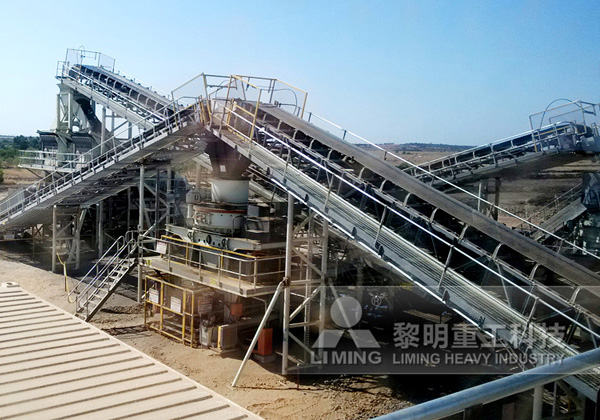Construction sand and gravel are essential raw materials widely used in the building and construction industry. They form the foundation of concrete, asphalt, road base, and many other construction products. To meet the growing demand for these materials, efficient production systems using crushers are vital.
What is a Construction Sand and Gravel Crusher?
A construction sand and gravel crusher is a machine designed to crush raw stones, rocks, and ores into smaller particles suitable for construction applications. These crushers transform large rocks and raw materials into construction-grade sand and gravel, which are then screened, washed, and graded for various uses.

Types of Crushers Used in Sand and Gravel Production
Several types of crushers are commonly used in the production of construction sand and gravel:
-
Jaw Crusher
A primary crusher that breaks large rocks into manageable sizes using compressive force. Ideal for hard, abrasive stones. -
Impact Crusher
Uses impact force to crush materials, suitable for softer rocks like limestone and producing more cubical aggregates. -
Cone Crusher
Secondary or tertiary crusher that further reduces stone size with a rotating cone inside a fixed outer shell. Good for medium to hard stones. -
Vertical Shaft Impact Crusher (VSI)
Produces high-quality sand by using high-speed impact energy to break down rock particles into finer grains.
Production Process Overview
The typical production process of construction sand and gravel using crushers includes:
-
Raw Material Extraction
Gravel and sand are usually sourced from riverbeds, quarries, or pits. -
Primary Crushing
Large rocks are fed into a jaw crusher to reduce them to smaller sizes. -
Secondary Crushing
Materials from the primary crusher are further reduced by impact or cone crushers to meet size specifications. -
Screening
Crushed materials are sorted by size using vibrating screens to separate gravel, sand, and fine particles. -
Washing
Sand and gravel are washed to remove clay, silt, and impurities, improving quality. -
Stockpiling
Finished products are stored and ready for delivery to construction sites.
Key Requirements for Crushers in Sand and Gravel Production
-
High Crushing Efficiency: To handle large volumes and reduce energy consumption.
-
Durability: Crushers must withstand abrasion from hard stones and high impact forces.
-
Adjustable Output Size: Ability to produce a range of aggregate sizes for different construction needs.
-
Easy Maintenance: Minimizing downtime and repair costs.
-
Environmental Considerations: Dust suppression systems and noise reduction.
Benefits of Using Crushers in Construction Sand and Gravel Production
-
Increased Productivity: Automated crushing lines can produce large quantities efficiently.
-
Improved Material Quality: Uniform particle size and shape improve concrete strength and stability.
-
Cost-Effectiveness: On-site crushing reduces transportation costs and raw material waste.
-
Sustainability: Recycling construction debris and reducing natural resource depletion.
The use of crushers in construction sand and gravel production plays a crucial role in the modern construction industry. By selecting the appropriate crusher type and optimizing the production process, manufacturers can produce high-quality aggregates that meet the diverse needs of infrastructure projects. Investing in advanced crushing technology ensures efficiency, quality, and sustainability in sand and gravel production.
If you want, I can also help with more details on specific crusher models or technology trends in this field! Would you like that?

